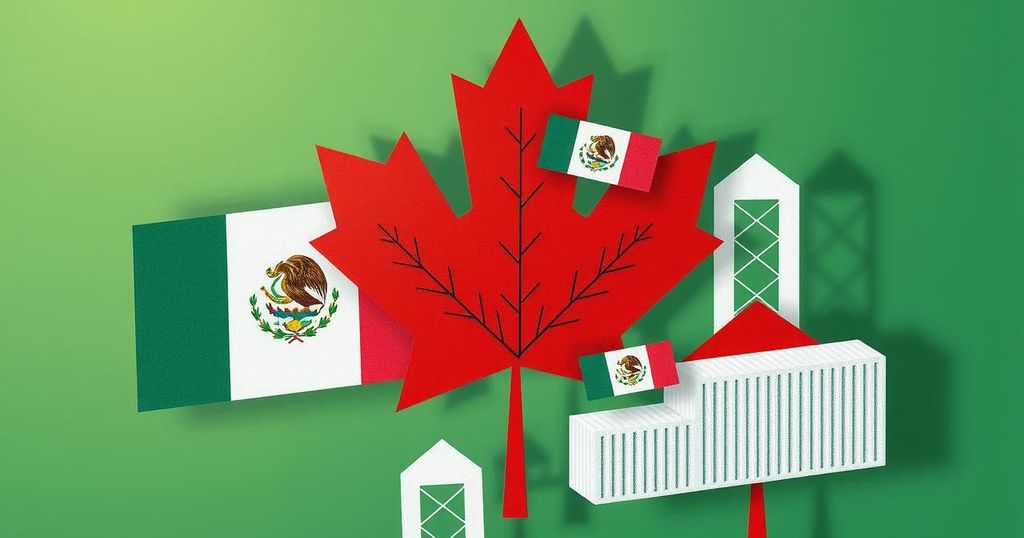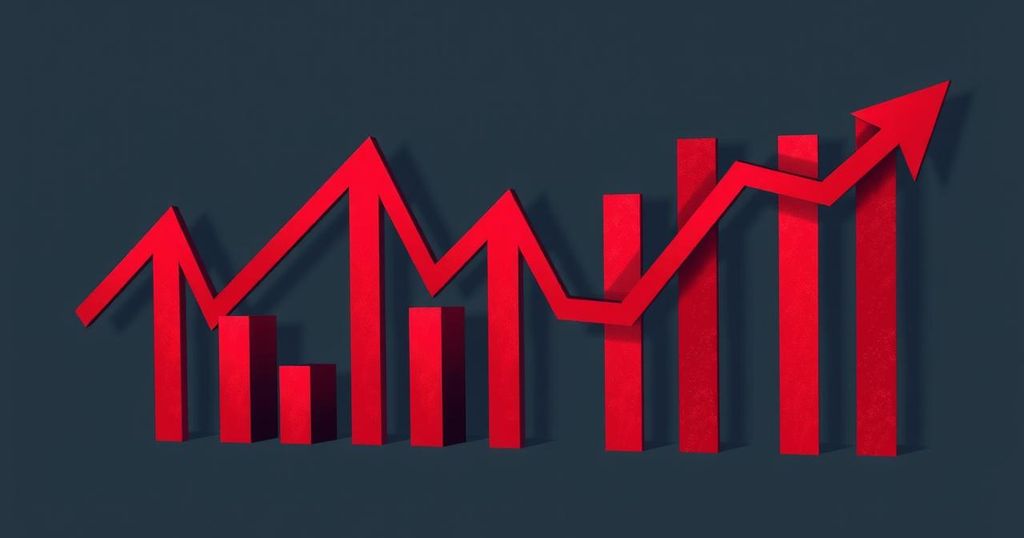President Trump has announced a new 25% tariff on imports from Mexico and Canada, effective immediately. This decision has led to declines in U.S. stock indexes and raised concerns over economic impacts, including potential retaliatory actions by the neighboring countries. Further tariffs on China and potential measures against the European Union are also in consideration, signaling an intensifying trade conflict.
On Monday, President Donald Trump announced the implementation of new 25% tariffs on exports from Mexico and Canada, marking a significant escalation in trade tensions with America’s two largest trading partners. The announcement was met with sharp declines in all three major U.S. stock indexes as the implications of the tariffs began to unfold. Despite evidence that neighboring countries have made efforts to curb illegal immigration and drug trafficking, including opioids, Trump has moved ahead with the tariff imposition.
As the tariffs take effect at midnight, the potential economic ramifications raise concerns for all three nations involved. Higher tariffs may diminish U.S. demand for goods from Mexico and Canada, which could, in turn, lead to increased prices for American consumers and businesses alike. The response from Mexico and Canada remains uncertain, yet both leaders—President Claudia Sheinbaum of Mexico and Prime Minister Justin Trudeau of Canada—have indicated their willingness to retaliate with their own tariffs on U.S. exports if the levies proceed.
Originally announced a month prior, the tariffs were meant to pressure Mexico and Canada into further actions against illegal immigration and drug trafficking, particularly addressing the fentanyl crisis in the United States. After a delay, the tariffs are now occurring despite a signal from U.S. Commerce Secretary Howard Lutnick that both nations had made improvements in border control and that illegal migrant crossings were at record lows.
In parallel, Trump is also moving forward with a separate 10% tariff on Chinese goods, further escalating trade tensions with multiple countries. Following a previous announcement, Mexico deployed 10,000 troops to its northern border to strengthen efforts against drug smuggling, while Canada appointed a former police officer as a designated official to address the fentanyl issue. These measures underline the serious impact of U.S. drug policy on bilateral trade relations.
Amid these developments, challenges for consumers and businesses are anticipated, with economists warning that the new tariffs will drive up prices and contribute to inflationary pressures. Both Trudeau and Sheinbaum have vowed to impose retaliatory tariffs if the new U.S. tariffs are implemented, with Trudeau labeling such tariffs as “entirely unjustified.”
In a broader context, Trump’s administration has hinted at further tariffs on goods from the European Union and announced plans for reciprocal tariffs in response to foreign levies already imposed on U.S. exports. Despite acknowledging potential short-term economic pain for Americans, Trump remains steadfast in his belief that these measures will ultimately benefit the U.S. economy by encouraging domestic manufacturing and reducing reliance on foreign imports.
In summary, President Trump’s decision to impose 25% tariffs on goods from Mexico and Canada signifies a significant escalation in trade tensions. The potential economic backlash involves increased prices for consumers and diminished demand for imported goods. While both Mexico and Canada prepare to retaliate, long-term implications of such tariffs raise concerns about inflation and trade dynamics. The situation warrants close observation as the impacts on international trade policies unfold.
Original Source: www.voanews.com




